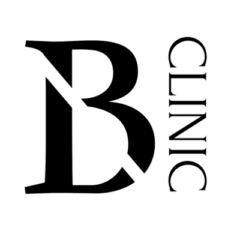total cost Definition & Facts Definition
When they talk to the t-shirt maker, they mention that the job will cost $100 plus $5 per shirt. The $100 is used to pay for design and setup as this only needs done once. If you only buy one shirt, it will cost $105 (the $100 + $5).
Don’t fear the REITs: Why negative outlook is overblown — Medical Economics
Don’t fear the REITs: Why negative outlook is overblown.
Posted: Tue, 22 Aug 2023 17:14:00 GMT [source]
When marginal cost is more, producing more units will increase the average. The change in quantity of units is the difference between the number of units produced at two varying levels of production. Marginal cost strives to be based on a per-unit assumption, so the formula should be used when it is possible to a single unit as possible. For example, the company above manufactured 24 pieces of heavy machinery for $1,000,000. The increased production will yield 25 total units, so the change in quantity of units produced is one ( ). Total cost refers to the aggregation of all types of costs related to a cost object, which means fixed costs, variable costs, and mixed costs.
What Is an Example of Marginal Cost?
They come from the production function and the factor payments. Let us use a new example to explore why costs seems to be increasing at an increasing rate. What we observe is that the cost increases as the firm produces higher quantities of output.
In contrast, variable costs do change depending on production volume. For example, the cost of materials that go into producing the widgets will rise as the number of widgets produced increases. The average cost is the cost per unit of producing a certain quantity. In accounting terms, we divide the sum of variable costs and fixed costs by the volume of goods produced. Analyze use the cost to determine if production should be temporarily shut. If you sell the products at a higher price than average variable cost and fixed costs, then your business can continue with the production.
- For example, widget company ZYX may have to spend $10 to manufacture one unit of product.
- In the long-run, we first decide on our level of capital, then pick the level of labor to produce at the desired level.
- Thus, the marginal cost for each of those marginal 20 units will be 80/20, or $4 per haircut.
This research is funded by the Strategic Research Council (SRC) (numbers , , ). The funding source was not involved in the study design; collection, analysis, and interpretation of data; writing the report; nor in the decision to submit the article for publication. The datasets generated during and/or analyzed during the current study are available from the corresponding author on reasonable request.
Average cost function
We will see in the following chapters that revenue is a function of the demand for the firm’s products. Total cost is an important indicator of financial health. It provides specific information regarding what a company or person spends on average. Total cost can help you determine if you are spending too much on something and whether or not you need to cut down on some of those costs. Now that you know the formula and things to consider, let’s go back to that question in the beginning of how much it costs to operate your car every month.
Variable costs are functions of a company’s production volume. For example, widget company ZYX may have to spend $10 to manufacture one unit of product. Therefore, if the company receives and inordinately large purchase order during a given month, its monthly expenditures rise accordingly. Jane is the Chief Operating Officer of the largest car manufacturer in the world.
What you need to know about the economic impact study of The … — Newscenter1.tv
What you need to know about the economic impact study of The ….
Posted: Tue, 22 Aug 2023 22:30:00 GMT [source]
As the number of barbers increases from zero to one in the table, output increases from 0 to 16 for a marginal gain (or marginal product) of 16. As the number rises from one to two barbers, output increases from 16 to 40, a marginal gain of 24. From that point on, though, the marginal product diminishes as we add each additional barber. For example, as the number of barbers rises from two to three, the marginal product is only 20; and as the number rises from three to four, the marginal product is only 12. Total costs are composed of both total fixed costs and total variable costs.
Variable Costs
Of the 227 eligible studies, 43 (19%) reported on impact of de-implementation on health care costs. Health care costs decreased in 27 studies (63%), increased in 2 (5%), and were unchanged in 14 (33%). Division method – To get the average costs of a product, we divided the total fixed costs by the production unit over a fixed period.
- Information on costing methods was not mentioned in the articles.
- Note that when the marginal grade is greater than the average grade, your average increases.
- If you sell the products at a higher price than average variable cost and fixed costs, then your business can continue with the production.
- Some firms, referred to as natural monopolies, enjoy such strong cost advantages to being big (economies of scale, in economic terms) that their marginal cost never starts sloping upwards.
We will learn in this chapter that short run costs are different from long run costs. The additional total cost of one additional unit of production is called marginal cost. For economic evaluation, information on resource use, costs, time horizons, health outcomes, or the consequences of interventions are necessary [33]. Incomplete cost information on de-implementation interventions does not allow economic evaluation or, at worst, may lead to distorted conclusions.
Overview of Cost Curves in Economics
This systematic scoping review was registered with Open Science Framework (OSF ueq32). Efficient use of health resources benefits both individuals and society — and one way to increase efficiency is to abandon obsolete and ineffective health interventions [1, 2]. To achieve this, de-implementation strategies are needed. De-implementation, a process to reduce the use of a medical practice, can occur in four different ways, by removing, replacing, reducing, or restricting the use [4]. Each category has different underlying reasons, and therefore, different solutions may be needed [5]. It is easier to implement new interventions than it is to de-implement existing medical practices [6].

The lack of cost information has been identified as a barrier to implementation [12, 14]. De-implementation requires sufficient financial, technical, and human resources [34]. The lack of cost information makes it impossible to evaluate the costs in a systematic way or to basing decision-making on this information. Knowledge-based decisions become possible only when intervention costs and impact on health care costs are both known. Of the articles that reported total costs or costs per unit, 10 out of 18 (56%) offered at least some detailed information on the costs, but only four (22%) reported the exact costs.
Total cost (TC) in the simplest terms is all the costs incurred in producing something or engaging in an activity. In economics, total cost is made up of variable costs + fixed costs. When marginal cost is less than average cost, the production of additional units will decrease the average cost.
Intuitively, an average fixed cost is downward sloping because, as quantity increases, fixed cost gets spread out over more units. Consequently, the total costs, combining $16,000 fixed costs with $25,000 variable costs, would come to $41,000. Total costs are an essential value a company must track to ensure the business remains fiscally solvent and thrives over the long term. Other economic models use the total variable cost curve (and therefore total cost curve) to illustrate the concepts of increasing, and later diminishing, marginal return. During the manufacturing process, a company may become more or less efficient as additional units are produced. This concept of efficiency through production is reflected through marginal cost, the incremental cost to produce units.
The cost function formula calculator helps businesses track expenses. Variable costs are the costs of the variable inputs Total Cost in Economics (e.g. labor). The only way to increase or decrease output is by increasing or decreasing the variable inputs.
Total Cost Formula
If you invest £1million in developing a cure for pancreatic cancer, the opportunity cost is that you can’t use that money to invest in developing a cure for skin cancer. A list and definition of different types of economic costs. Because the numerator is fixed, the value of the fraction gets smaller and smaller.
Average variable cost will help you determine if you should temporarily stop your production. If the price received is greater than the average variable cost and fixed costs, production should continue. But you should shut down production when the price is lower than the sum of average variable costs and fixed costs. In this section, we discuss how to calculate average variable costs. Sometimes firms need to look at their cost per unit of output, not just their total cost.
